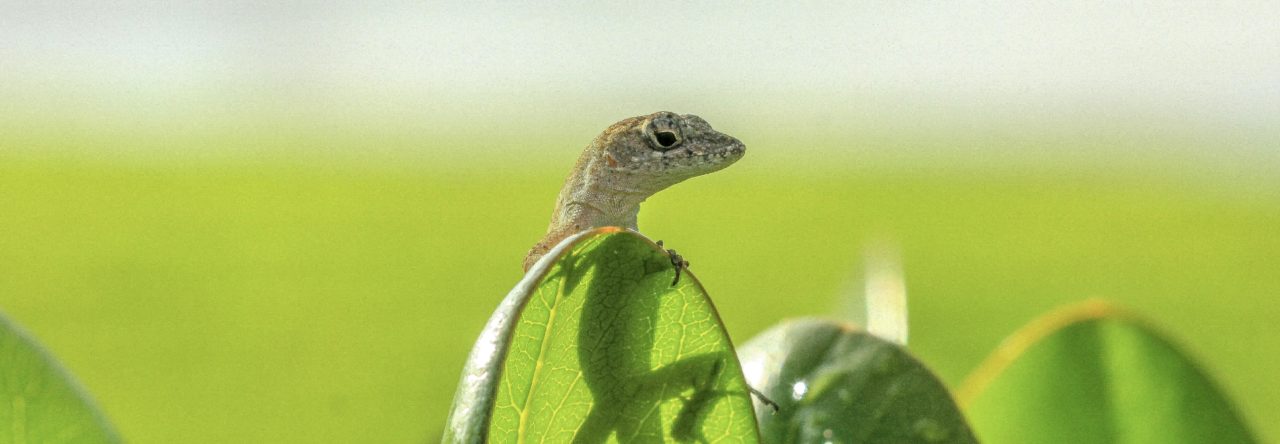Previous posts (1, 2, 3) have discussed the effect of Curly-tailed lizards (Leiocephalus carinatus) on brown anoles in the Bahamas and elsewhere. To summarize briefly, the effect is this: curly-tails eat brown anoles. Lots of them. The survivors move up into bushes to get away.
Such slaughter may seem of academic interest when it occurs in far-flung Caribbean ports, but soon–already!–Florida denizens can see the carnage up close and personal. The reason: curly-tails have been introduced to the east coast of Florida and seem to be spreading fairly rapidly.
This is all preamble to a series of photographs that AA reader John Rahn has sent in. John lives in Hobe Sound, Florida (on the coast, north of Miami and West Palm Beach) and enjoys watching and photographing lizards on his back patio. He commented that “I love watching their antics. They are actually quite interesting and are great subjects to practice shooting (photographing).There’s another on my patio (editor’s note: “another” refers to the A. distichus he mentioned, along with a photo, in a comment), a girl with great markings and a red head, and this big boy.”




 . Anyone got a pattern?
. Anyone got a pattern?







